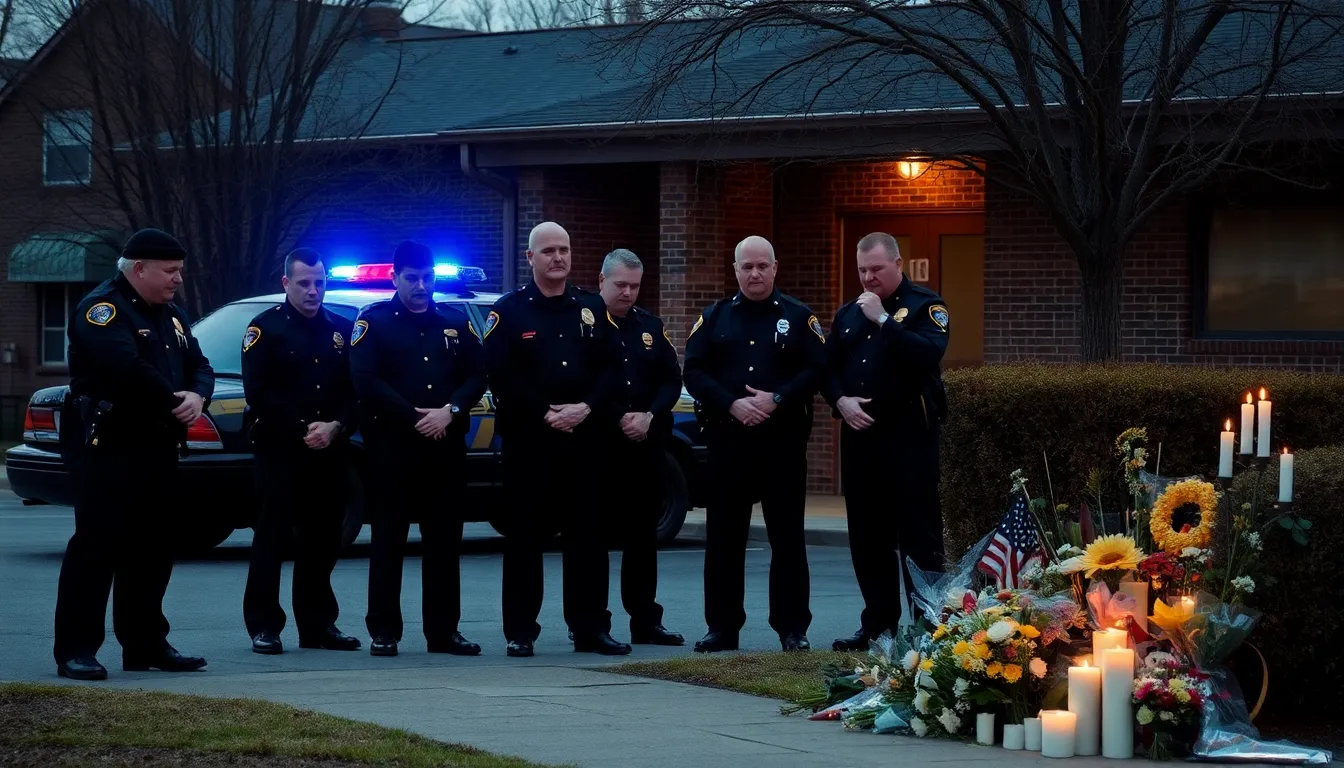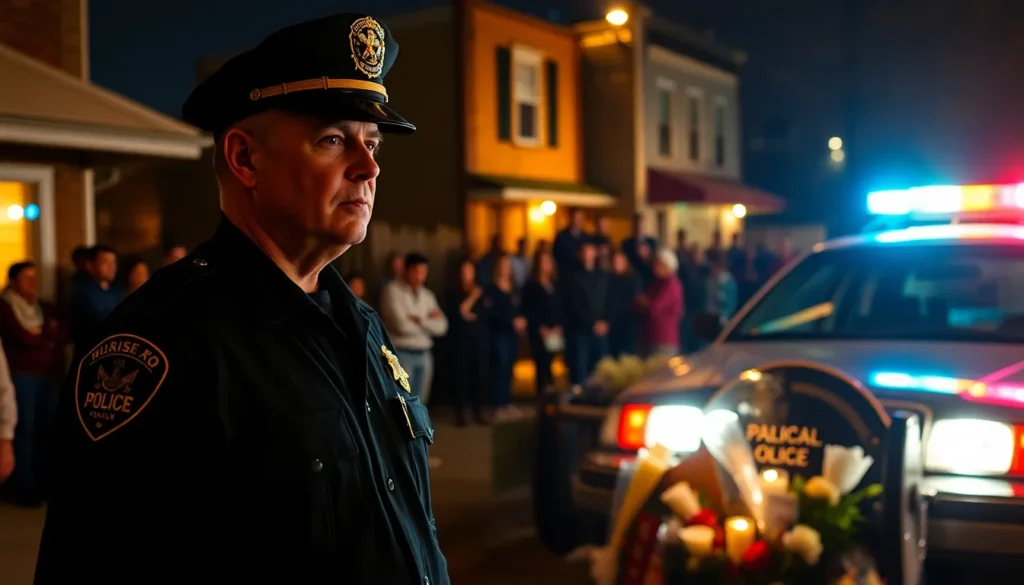In a shocking turn of events that feels ripped straight from a crime drama, a 14-year-old has found himself at the center of a tragic incident involving the death of a police officer. While the details are still unfolding, this case raises crucial questions about youth, violence, and the systems meant to protect society. How does a teenager become involved in such a grave situation?
As the community grapples with the aftermath, this story forces us to confront uncomfortable truths about crime, responsibility, and the challenges facing today’s youth. It’s a sobering reminder that behind every headline lies a complex narrative that demands our attention. Buckle up as we dive deeper into this unsettling tale, exploring the implications and the broader context that led to this heartbreaking moment.
Table of Contents
ToggleBackground of the Incident
The tragic event occurred on a Friday night when the 14-year-old was involved in a confrontation with law enforcement. The police responded to a reported disturbance in the area. During this encounter, a struggle ensued, leading to the fatal shooting of an officer.
Authorities identified the officer as a 10-year veteran, dedicated to serving the community. Witnesses described the situation as chaotic, with several individuals present at the scene. These accounts highlighted the unpredictable nature of the incident.
Law enforcement agencies quickly launched an investigation. They examined evidence, including surveillance footage and eyewitness testimonies. The teenage suspect was taken into custody shortly after the shooting. Charges against the boy include first-degree murder, a serious allegation for someone of his age.
Community reactions have been mixed. Many expressed shock at the youth’s involvement in such violence. Others raised concerns regarding systemic issues related to juvenile crime and societal factors contributing to this behavior.
Discussions surrounding the incident prompted calls for increased support for at-risk youth. Experts emphasized the importance of mental health resources and community programs. These discussions aimed to address the root causes that lead to such violence, suggesting a need for preventive measures.
The implications of this tragedy extend beyond the immediate facts. Conversations about police interactions with minors have surfaced, reflecting broader societal concerns. As the legal process unfolds, the community remains vigilant, anticipating the long-term effects of this heartbreaking situation.
Details of the Event

The tragic event surrounding the shooting of a police officer by a 14-year-old has garnered significant attention. Law enforcement responded to a reported disturbance, leading to the confrontation that resulted in the officer’s death.
Timeline of Events
- Initial Report: Officers received a disturbance call on [Exact Date].
- Arrival at Scene: Law enforcement arrived within minutes, assessing the situation.
- Escalation: A struggle ensued between the officers and the teenager.
- Shooting Incident: The officer was shot during the confrontation.
- Emergency Response: Medical personnel arrived shortly after; however, the officer succumbed to injuries.
- Arrest: The 14-year-old was taken into custody, charged with first-degree murder the next day.
Key Individuals Involved
- Victim: The officer, a dedicated 10-year veteran with a strong community presence, leaves behind a grieving family.
- Suspect: The 14-year-old, whose identity is protected due to age, now faces serious legal consequences.
- Witnesses: Bystanders described the chaos, providing accounts that unfold various perspectives of the event.
- Law Enforcement: Responding officers upheld their duty under challenging circumstances and face emotional impacts.
- Community Leaders: Local leaders express concern and call for discussions on youth violence and needed support systems.
Community Reaction
Community reactions to the incident involve a blend of disbelief and urgent calls for change. Many residents feel shaken, unable to comprehend how a 14-year-old could engage in such violence.
Public Outcry
Public outcry revolves around the shocking nature of the crime. Social media platforms reflect numerous expressions of disbelief, with hashtags trending to honor the fallen officer. Citizens voice concerns about youth violence and systemic failures that lead to such events. Local leaders urge for immediate discussions prioritizing youth support and mental health resources. Town halls are being organized, inviting community members to share their thoughts and propose solutions. Many activists engage in raising awareness about the need for early interventions targeting at-risk youth. Families emphasize that understanding and addressing underlying issues is crucial for preventing similar occurrences.
Law Enforcement Response
Law enforcement officials respond with heightened concern regarding youth involvement in violence. They emphasize the necessity of evaluating current practices when interacting with minors. Many departments prioritize training focused on de-escalation techniques and communication strategies tailored for youth. Police are collaborating with community organizations to develop outreach programs aimed at educating young individuals about consequences. Officials stress the importance of transparency in ongoing investigations, reassuring the community about accountability. Increased patrols in neighborhoods are planned as a preventive measure against future incidents. Overall, law enforcement acknowledges a need for systemic change, recognizing that addressing root causes is vital for safety.
Legal Implications
The charges against the 14-year-old reflect serious legal consequences.
Arrest and Charges
After the incident, law enforcement took the teenager into custody swiftly. Authorities charged him with first-degree murder, a significant allegation considering his age. Legal experts note that juvenile laws vary by state, affecting trial processes. Discussions around the case highlight the gravity of the situation and the implications of charging a minor with such a serious crime. Officials considered whether the adolescent would face trial as an adult, which would increase potential penalties significantly. Public interest in this case remains high, as many ponder the broader implications of youth violence on legal systems.
Potential Consequences
Sentencing for a conviction could lead to severe repercussions. Influencing factors include the jurisdiction’s laws and the circumstances surrounding the incident. If convicted, the teenager could face life in prison, though juvenile sentencing often emphasizes rehabilitation over punishment. Various stakeholders advocate for evaluating the mental health aspects of youth offenders, recognizing they require different approaches than adults. Public opinion continues to shape discussions on appropriate consequences, focusing on balancing accountability and compassion. The case raises questions about how society handles juvenile crime and the effectiveness of existing support systems.
Societal Factors
Societal factors contribute significantly to youth violence and the circumstances surrounding tragic incidents like this one.
Influences on Youth Violence
Various influences affect youth violence. Broken homes often create unstable environments, which can lead to emotional distress in children. Lack of access to educational resources may result in limited opportunities, pushing at-risk youth toward negative behaviors. Substance abuse in the community can also play a significant role, providing a gateway for reckless decisions. Peer pressure often encourages young individuals to engage in violent actions to gain acceptance. Mental health issues remain vital, with untreated conditions affecting decision-making and impulse control. Seeking support systems becomes essential for addressing these underlying factors and preventing future incidents.
Role of Media Coverage
Media coverage plays a critical role in shaping public perception of youth violence. Sensationalized reporting can amplify fear and misunderstanding, reflecting negatively on entire communities. Headlines often focus on the age of the perpetrator, sparking outrage and concern among readers. Social media platforms quickly spread narratives, influencing public opinion before all facts are established. Responsible journalism should emphasize context, exploring systemic issues rather than just the violent act itself. This approach encourages constructive conversations about youth interventions and community responsibilities. By highlighting both the tragedy and the contributing factors, media can foster an informed dialogue aimed at preventing similar occurrences in the future.
The tragic event involving a 14-year-old and the death of a police officer highlights deep-rooted issues within society. As communities grapple with the shock and grief of this incident, it’s clear that urgent conversations about youth violence and support systems are necessary.
The implications of this case extend beyond the courtroom, prompting a reevaluation of how society addresses the challenges faced by at-risk youth. Advocates stress the importance of mental health resources and preventative measures to help steer young individuals away from violence.
As the legal proceedings unfold, the community remains focused on finding solutions that prioritize both accountability and compassion, aiming to prevent similar tragedies in the future.





